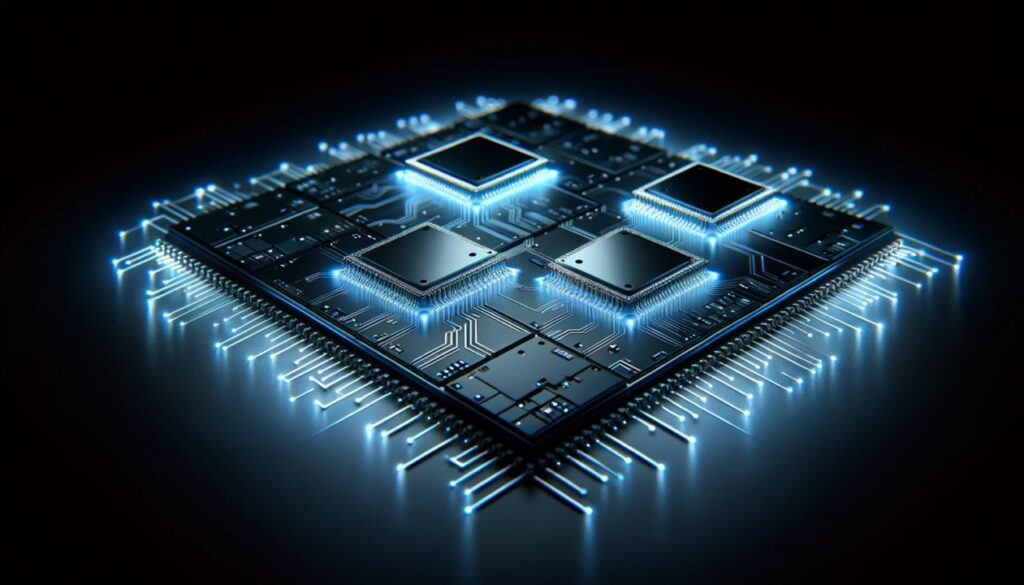The semiconductor industry is a cornerstone of modern technology, driving advancements in everything from consumer electronics to automotive and industrial applications. As demand for smaller, faster, and more efficient semiconductors grows, innovation in manufacturing processes is critical. Here, we explore some of the cutting-edge technologies revolutionizing semiconductor production.

Advanced Lithography Techniques
Lithography is a crucial process in semiconductor manufacturing, defining the intricate patterns on silicon wafers. Recent advancements in lithography techniques, such as Extreme Ultraviolet (EUV) lithography, are pushing the boundaries of what’s possible. EUV lithography uses light with a much shorter wavelength than traditional methods, allowing for finer resolution and smaller feature sizes on chips. This innovation is enabling the production of more powerful and efficient semiconductors, supporting the continued trend of performance enhancement in electronic devices.
AI and Machine Learning Integration
Artificial Intelligence (AI) and machine learning are transforming semiconductor manufacturing by optimizing production processes and improving quality control. AI-driven systems can predict equipment failures and optimize maintenance schedules, reducing downtime and extending machinery life. Machine learning algorithms analyze vast amounts of production data to detect anomalies and defects that might be missed by human inspection. This leads to higher yield rates and better-quality semiconductors. Additionally, AI is being used to design more efficient manufacturing workflows, further boosting productivity and reducing costs.
Atomic Layer Deposition (ALD)
Atomic Layer Deposition (ALD) is a cutting-edge technique used to create ultra-thin films on semiconductor wafers with atomic-level precision. This process is essential for manufacturing advanced transistors and memory devices. ALD allows for the deposition of materials one atomic layer at a time, ensuring uniform thickness and excellent conformity even on complex 3D structures. This precision is critical for the development of next-generation semiconductors, which require increasingly smaller and more reliable components.
Quantum Dot Technology
Quantum dots are nanometer-sized semiconductor particles that have unique electronic properties due to quantum mechanics. These particles are being integrated into semiconductor manufacturing to create more efficient and powerful devices. Quantum dot technology is particularly promising for applications in optoelectronics, such as advanced displays and solar cells. By leveraging the unique properties of quantum dots, manufacturers can produce semiconductors with enhanced performance characteristics, opening up new possibilities in various technological fields.
Advanced Packaging Solutions
As the performance demands on semiconductors continue to rise, innovative packaging solutions are becoming essential. Advanced packaging technologies, such as 2.5D and 3D packaging, are revolutionizing how chips are integrated and connected. These techniques involve stacking multiple semiconductor dies vertically or placing them side by side on a single substrate. This not only saves space but also improves performance by reducing the distance signals need to travel between components. Advanced packaging solutions are critical for the development of high-performance computing devices, including servers, AI accelerators, and next-generation consumer electronics.
Embracing the Future of Semiconductor Manufacturing
Innovation in semiconductor manufacturing is driving the industry forward, enabling the production of smaller, faster, and more efficient chips. Advanced lithography techniques, AI and machine learning integration, Atomic Layer Deposition, quantum dot technology, and advanced packaging solutions are at the forefront of this revolution. These cutting-edge technologies are not only improving current manufacturing processes but also paving the way for future advancements.
As the demand for sophisticated electronic devices continues to grow, the semiconductor industry must continue to embrace and invest in these innovations. By doing so, manufacturers can meet the evolving needs of various sectors and maintain their competitive edge in a rapidly changing technological landscape. The future of semiconductor manufacturing is bright, and the continued pursuit of innovation will ensure its vital role in powering the next generation of technological breakthroughs.
